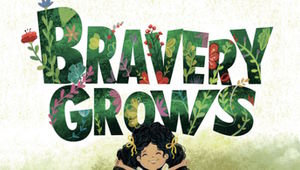Blog
Selective Mutism and Other Forms of Anxiety
February 2025
Dear SMA Community,
Part of the Selective Mutism Association’s goal is to advocate for those with
selective mutism by spreading awareness and providing educational resources
and tools. We believe that the best way to raise understanding of SM is to
eliminate common misconceptions, provide accurate information, and work
directly with families and individuals who experience SM.
Amongst individuals with selective mutism (SM), comorbidity – a technical
term for having more than one diagnosis – tends to be the norm rather than
the exception. Receiving multiple diagnoses for your child can be
overwhelming and anxiety-provoking for parents, but it is really quite
common! In fact, in some research studies, between 60-80% of children with
SM also meet the criteria for another anxiety disorder (Catchpole, et al.,
2019, Dreissen et al., 2020). Although children with SM can sometimes have
challenges in other domains (e.g., speech/language disorders, autism
spectrum disorders, oppositional behaviors), this article will help caregivers
better understand some of the most common ways that other forms of
anxiety and SM can overlap.
Perhaps the most frequently diagnosed co-occurring disorder with selective
mutism is social anxiety disorder (sometimes referred to as social phobia). Individuals with social anxiety disorder worry excessively about doing something embarrassing, being humiliated, or being negatively evaluated. This can lead them to avoid social interactions, especially situations in which they might be the center of attention. Social anxiety can impact verbal communication as well as non-verbal participation in activities with other people.
Like SM, separation anxiety disorder is another anxiety presentation that commonly manifests in early childhood. Although many young children may become tearful upon separating from their parents (e.g., at school drop off or when being left with a babysitter), children with separation anxiety
disorder can have much more extreme reactions, at times being inconsolable
in these situations. They often worry that something bad will happen to them
(e.g., they will get lost or kidnapped) or that something bad will happen to
their parents (e.g., they will get in an accident or they will leave and never
come back) when they are not together.
Specific phobias are intense fears of a particular object or situation. Common
phobias among young children are the dark, dogs, needles, and vomiting.
While these situations are unpleasant for many people (no one likes getting a
shot or throwing up!), and parents should not be unduly alarmed, a phobia
may be diagnosed when the fear is highly distressing, is associated with high
levels of avoidance, and causes significant interference in the child or
family’s functioning. For example, a child with a phobia of needles may be
behind on vaccinations and may cry, scream, lash out physically, or attempt
to hide or run away when it is time to get a shot. They also may worry
excessively leading up to a doctor’s appointment – even if they are reassured
that they don’t need a shot! A child with a phobia of dogs may unthinkingly
dart out into the street without looking if they see a dog ahead, or refuse to
go to a relative’s house with a dog.
In older children and adolescents with SM, generalized anxiety disorder (GAD)
is another common comorbidity. Individuals with GAD are worriers. They may
constantly be “on alert” and can quickly become overly focused on all kinds
of bad things that might happen in all types of situations. Worries typically
pop up across a range of contexts (e.g., doing well enough in school, making
mistakes, friendships, world events, family relationships, health and safety)
and are difficult to stop. Children who worry often may be irritable and
complain of physical symptoms like headaches, stomachaches, difficulty
concentrating, and restlessness.
Although anxiety can present in many forms, there are a number of factors
that link these disorders, including behavioral inhibition, hypervigilance,
difficulty tolerating uncertainty, and distress intolerance. Thus, if your child
has been diagnosed with more than one anxiety disorder, it can be helpful to
think about these diagnoses as different aspects of the same set of
underlying vulnerabilities rather than a laundry list of unrelated problems.
The good news for caregivers is that youth anxiety disorders are highly
treatable and many of the strategies you may be using to support your child
with SM (e.g., one one-on-one child-led interactions with new people,
bravery practices, reinforcement of brave behaviors, focusing on helpful
thoughts) can be tweaked and applied to other anxiety targets. In addition,
the medications that are most frequently prescribed for children with SM are
also beneficial in reducing anxiety in other domains.
As always, if you have any of these concerns about your child, please do not
hesitate to reach out to a professional for support. SMA maintains a list of
treating professionals, the vast majority of whom are experienced not just
with SM, but also in working with many other forms of anxiety and other
emotional, behavioral, and developmental challenges.
Sincerely,
Rachel Merson, Psy.D.
SMA Board of Directors




